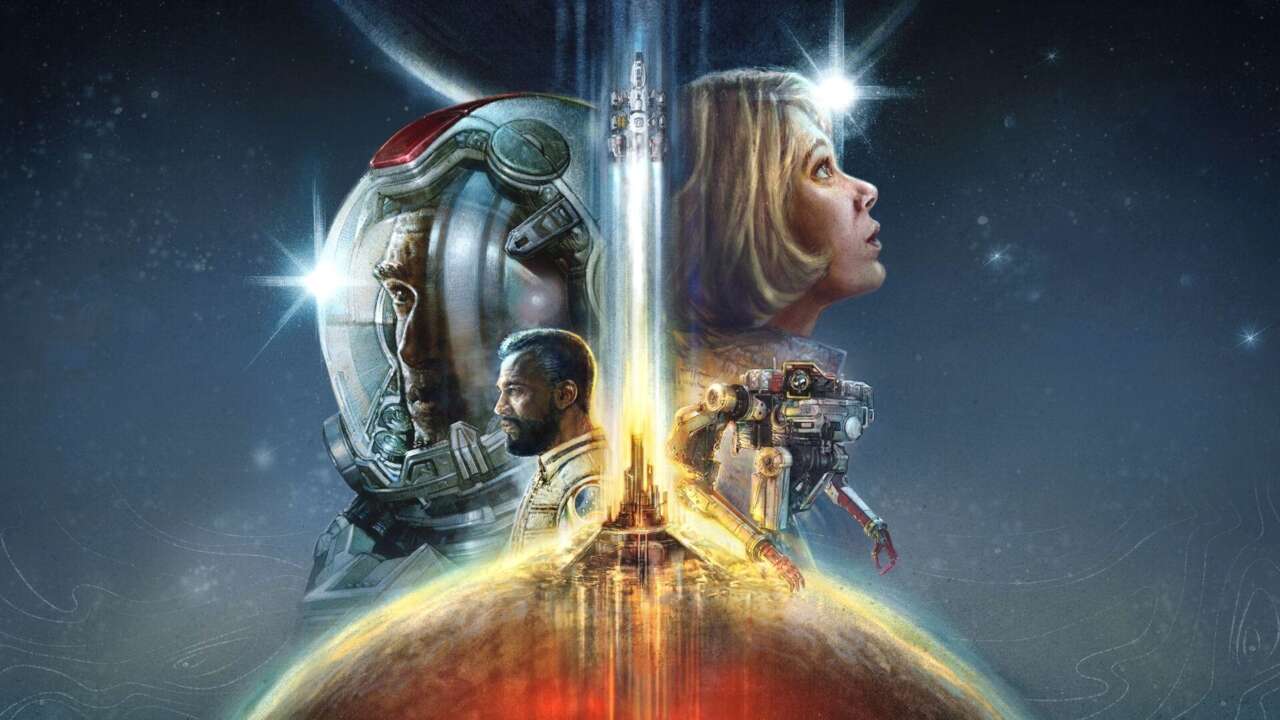reescreva este conteúdo com no minimo 1200 caracteres e formate ele para deixar bem apresentável e adicione alguns emojis para deixar mais unico o possivel It’s hard to ponder the infinite possibilities of space and not get romantic about it. Our imagination of the cosmos has taken many artistic forms, and the hard science behind the greatest discoveries on the final frontier has been just as enthralling. It’s this sense of wonder that makes the prospect of Starfield so intriguing–even more so than if it were just Bethesda Game Studios’ next major RPG. However, it’s best to cast aside that love and fascination with space because, at its core, Starfield follows a very familiar formula without meaningfully engaging with its setting or the gameplay systems therein.Starfield is undoubtedly impressive in scale, from the sheer number of star systems and planets you can explore to the multitude of gameplay mechanics that tie the experience together. But once you start to see how all these big ideas are interconnected from a narrative perspective and technical standpoint, the illusion of a grand cosmic voyage shatters and the veneer starts to wear thin. And so, somewhere along my 55 or so hours spent playing Starfield, I dropped the notion of finding that wondrous space adventure and accepted Starfield for what it is: a shooter-focused RPG in the traditional Bethesda framework that has its wild and fun moments but one that’s ultimately a mile wide and an inch deep. You need a javascript enabled browser to watch videos.Size:640 × 360480 × 270 Want us to remember this setting for all your devices? Sign up or Sign in now! Please use a html5 video capable browser to watch videos. This video has an invalid file format. Sorry, but you can’t access this content!Please enter your date of birth to view this videoJanuaryFebruaryMarchAprilMayJuneJulyAugustSeptemberOctoberNovemberDecember12345678910111213141516171819202122232425262728293031Year2023202220212020201920182017201620152014201320122011201020092008200720062005200420032002200120001999199819971996199519941993199219911990198919881987198619851984198319821981198019791978197719761975197419731972197119701969196819671966196519641963196219611960195919581957195619551954195319521951195019491948194719461945194419431942194119401939193819371936193519341933193219311930192919281927192619251924192319221921192019191918191719161915191419131912191119101909190819071906190519041903190219011900 By clicking ‘enter’, you agree to GameSpot’s Terms of Use and Privacy Policyenter Now Playing: Starfield Video Review Starfield’s main quest is the most emblematic of the game’s shortcomings. Despite romanticizing the idea of taking to the stars to explore the great unknown, these narrative ambitions fall into shallow stories that undersell the spacefaring premise. You start as a lowly miner extracting resources for a faceless corporation and within minutes, come in contact with an “Artifact” that activates mysterious visions of something bigger out in the galaxy–a sort of leaving-the-vault moment like in Fallout. You’re then shuffled into the ranks of a small organization called Constellation, whose sole purpose is to chase these Artifacts and uncover their purpose. With the handful of characters who make up the group, Starfield tries to instill personality into its story, but consistently weak writing and generic dialogue means these characters–who do have a few interesting moments along the way–largely fall flat.It’s especially tough to buy into the Artifact-collecting scenario when the game’s story extolls the virtues of science, yet undermines them by haphazardly throwing around scientific concepts in dialogue and then resorting to inexplicable supernatural forces that everyone in-game seems to just accept at face value. There’s very little weight or impact given to what characters often describe as great discoveries that could change the course of history, and it’s missing an earnest examination on the nature of humanity’s place in space, even when it tries to be self-reflective. I was never asking Starfield to lecture me on quantum physics, but I hoped for a story that wants to pay reverence to the scientific philosophies that make the genre intriguing to give those concepts their necessary respect.The wild goose chase that is the main quest lacks strong motivations from a narrative perspective, and the mission structure mostly relies on a predictable formula. You’re often shooting your way through mining facilities to dig up Artifacts your colleagues happened to locate halfway across the galaxy, which involves taking down space pirates because you need someone to shoot. Or you’re fast-traveling to faraway star systems to fetch clues on the next objective, follow laughably nonsensical riddles, or have conversations that could’ve been an email. There are occasional breaks in this process that lead to notable moments, such as having to navigate the grimey underbelly of the cyberpunk-inspired city of Neon, where all the dystopian archetypes thrive.Engaging in tense conversations offer some variance in the moment-to-moment beats but the outcomes are largely the same, like when I had to resolve a bank robbery on a remote planet that resembled the American Old West, or cut a deal with a space pirate for an important item I needed–you’d be surprised how far a simple Persuasion check can get you, yet how little the game cared if it went one way or another. If the situation devolved into a shootout, the people around town would barely bat an eye or give a tangible response to the fact that I resorted to violence.These kinds of moments highlight the illusion of choice, where supposed moral quandaries boil down to vague differences in philosophy, and this extends across the story and through the final encounters with Starfield’s main antagonists. Towards the end, the main quest legitimately started to shine by setting aside its RPG-light storytelling and embracing being a full-on shooter. One sequence borrows inspiration from Titanfall 2’s Effect and Cause mission, and a late-game mission tested the limits of my combat prowess with satisfying challenge. And despite the underwhelming revelations leading up to the conclusion, Starfield does have a moment of brilliance in how it lets you end your journey, contextualizing New Game+ in one of the most interesting ways I’ve seen while offering a few noteworthy incentives for a second run.As is tradition with Bethesda games, however, the golden path questline is not exactly the main course, and it’s in the side quests where Starfield is at its best. Here, you set aside the wonders of the great unknown and instead dive into the problems of various factions and the people who’ve settled in the few cities and towns scattered across the galaxy.One such example is the Crimson Fleet faction questline, where the de facto galactic government coerces you into going undercover inside space’s biggest criminal ring–and this chain of quests is one of the finest in a Bethesda RPG. It’s not so much the ethical dilemmas or tension you feel when bouncing between the two factions, but the fact you find yourself in the middle of some wild situations like corporate disputes, intense shootouts, blackmailing characters, and infiltrating high-security facilities. Compelling subplots emerge in the process that also tie back to the quest at hand, and you’re hit with some exceptional setpieces that incorporate multiple facets of Starfield’s gameplay systems at a steady pace. I even found myself conflicted when making final decisions since certain side characters began to grow on me. Once the dust settled, I moved on with trekking the galaxy, constantly searching for the same high.Not every optional questline matches that scope and depth, but there are certainly rare flashes of similar quality. Getting caught up in megacorp Ryujin Industries’ messy business by starting as a rank-and-file employee then meddling in its affairs from the inside was worth seeing through for the corporate drama. Playing space deputy for the Freestar Collective, on the other hand, wasn’t as intriguing per se. It turned out to be predictable on the whole, but it took me to new locations, featured some fun firefights, and offered valuable rewards. Although a bit superficial, helping a ship full of people who never made human contact after leaving Earth hundreds of years ago brought me to a resort-style planet to deal with a greedy CEO, and ultimately gave me the chance to find those in need a new home.Side content comes in varying degrees of quality, but these are the kinds of rabbit holes you want to fall down; they are what make Starfield worth unraveling, even if the process often feels like a checklist of objectives to blaze through. And at times, they culminate in something almost meaningful. At the same time, the setting starts to seem superficial as it’s less about life on the cosmic frontier and more about petty human problems that are just by-the-book extensions of what we deal with on Earth. While they don’t give the impression of having major impacts on the galaxy’s fate, or explore topics of technology and corporate exploitation impacting human life with much depth, side content is dealt…

